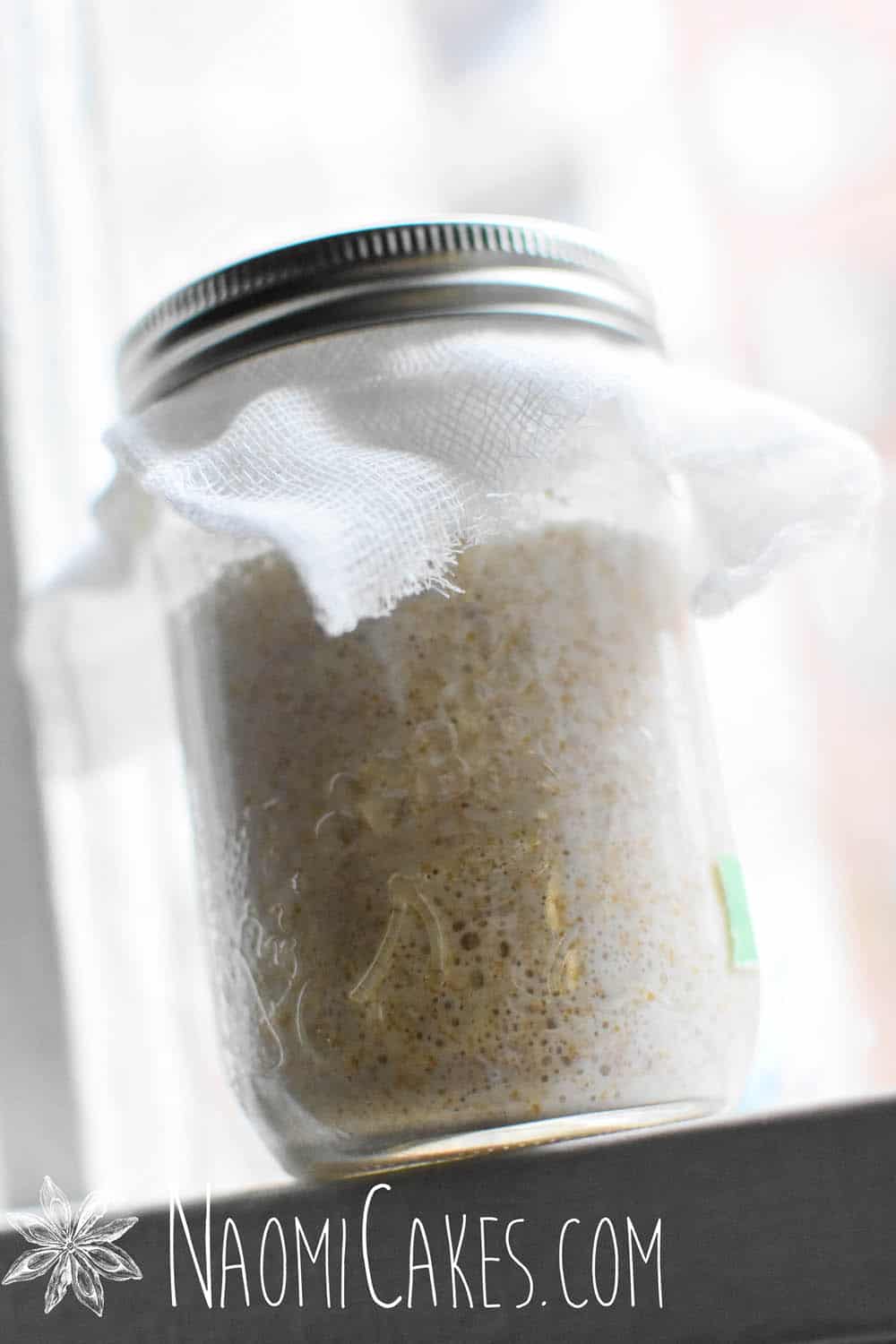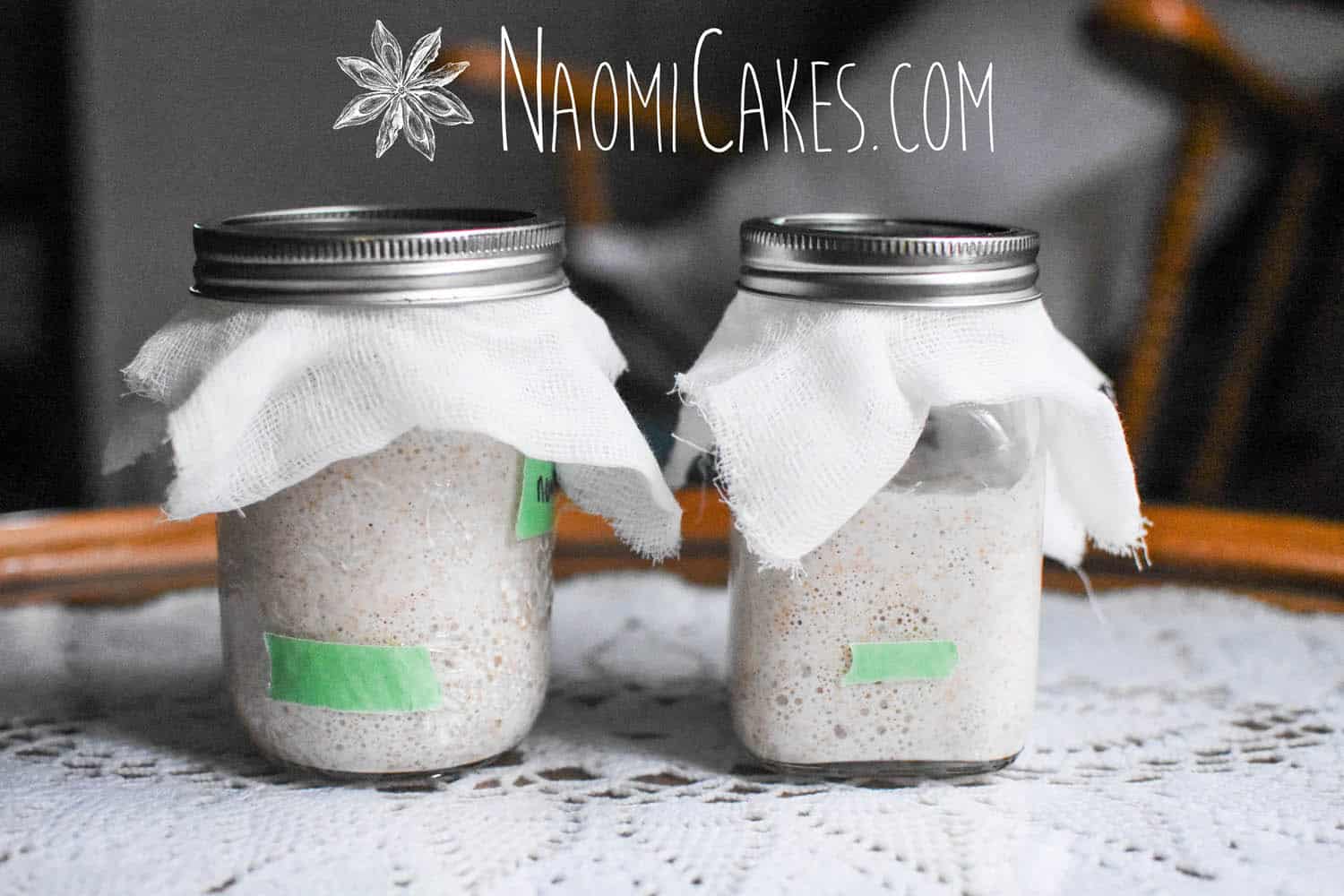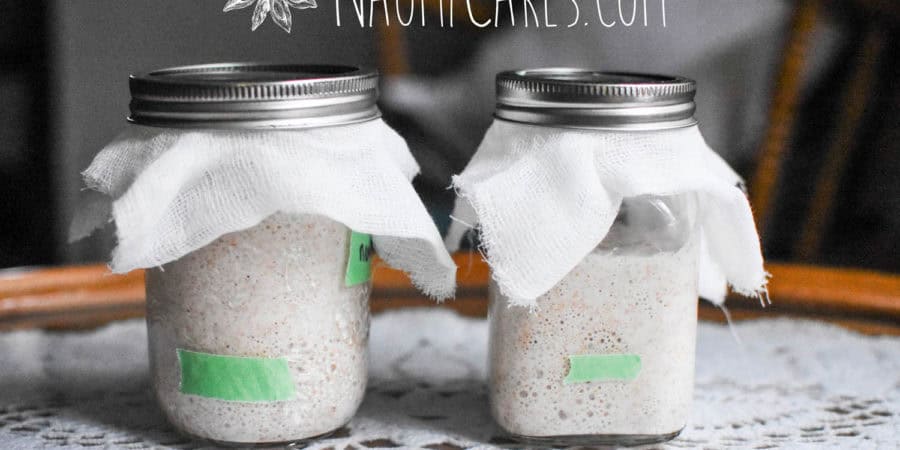Okay everybody, I believe I can safely say that I’ve successfully made a good sourdough starter! As you can see in these pictures, my starter has risen up to be beautiful, and I’ve made several successful loaves of bread (and several successful starters!) since. I’m currently working on a rye starter, but I’m not going to comment on that one until it’s done. In the meantime, here are some things I’ve learned:
1. My house for most of the winter was very, very cold.
That did not work out for me. I read somewhere that putting your starter on top of an appliance that produces a steady amount of warmth would help… So I did, and it did help! But on those really cold days, my starter still struggled. It wasn’t until the weather warmed up just slightly that I noticed my starter begin to thrive! So, if this is you – be patient! A day will come that might work out for you better. And if it makes you feel better, my starter still lives on my fridge. It’s happy there, so I let it be.
2. Use whole wheat flour.
I recommend using whole wheat flour because I still haven’t been able to make a (very) successful starter with white flour! Rye flour also (so far!) has worked for me.
Once I have created an established starter, I’ve switched to feeding mine with white flour, which effectively creates a white sourdough starter after a few feedings. This way I have the option to make pure white sourdough bread.
3. Use a clean jar every time you feed it.
This might sound odd, but I found that my starter (and my life) seemed much happier when I transferred it to a clean mason jar every day. At first, I tried using cheesecloth or paper towel to cover it so that it could “catch” the wild yeast from the air without being closed off by a lid. However, when I did that, I found that the cloth or paper towel would stick to whatever bit of starter was left on the rim. Even when I tried to clean it off super well, I’d be ripping fabric or paper off of dry starter every day, which was not fun. Also, if I used a lid, it would stick to the top of the jar and create a tight seal – which you don’t want! So try using a clean jar!

All of that said, here’s what I did, and here’s what’s worked for me several times over. Use WHOLE WHEAT flour for this tutorial:
Simple Sourdough Starter
Day 1:
In a clean mason jar (I used a pint jar to start), measure 50g whole wheat flour and 50g water into the base, and stir them together. Put the lid on, but don’t tighten the seal – leave it nice and loose.
Day 2:
“Feed” the starter with another 50g flour and 50g water, stir till combined, and replace the lid as before.
Day 3:
Spoon 50g of the mixture into a clean pint jar, and add another 50g flour and 50g water, stirring them together. Replace the loose fitting lid as before. Discard the excess starter, or save it in the fridge to make sourdough crêpes or some other delicious wonder later!
Days 4 & 5:
Repeat as on Day 3.
Day 6:
Spoon 50g of the mixture into a clean quart jar, and add another 50g flour and 50g water, and stir them together. Replace the lid as before, and discard the excess starter.
Day 7:
Again, repeat the directions as on Day 6, using a clean jar every day.
Then, every day ever after… Keep repeating this process (as on Day 6), unless you want to take a break for a while. After that you can put the starter in the fridge, and try to feed it once a week to keep it alive.
Between day 7 and day 9, you should notice that the mixture begins to double and triple in volume inside of the jar. To test if it’s ready to make bread, spoon a little bit into some water. If the mixture floats, it’s ready!

Those bits of green tape in my pictures are markers for where the starter was when I first mixed it together… and everything above it is what rose!
You can see that I used cheesecloth AND a lid for each jar in these photos… which was perfect, but I realized not really necessary once I started using clean jars. If you keep the starter in the same jar the whole time, however, then you should definitely do that as well. Put some cheesecloth over the mouth of the jar, and then a loose fitting lid on top of that.
And now… BREAD! I would love to share a recipe for that, but for now I’m just going to tell you that I want to make sure I really get that right before I tell you what to do. So, stay tuned! A starter is where it begins, and then the journey continues into new and exciting realms.
I hope this helps you! Let me know how your journey is going.
I’ll be back soon,
Naomi


[…] came up with this recipe during the beginning of my sourdough journey because I just couldn’t bring myself to throw away my excess starter. After all, I paid for […]
[…] I shared a recipe for Easy Cinnamon Rolls with Vanilla Glaze. It was a hit! So, as a part of my sourdough journey this year, I decided to try making a sourdough […]
[…] me in making it because it’s probably going to be a bonding experience. Kind of like making sourdough. (If you know what I mean by that, you know. Sourdough and its foibles binds people together in a […]
[…] made 4 loaves to last us a little while. If you’ve never made sourdough before, check out my sourdough starter tutorial to get yourself rolling! Pictured below: My cheater’s version, “Mock Sourdough […]